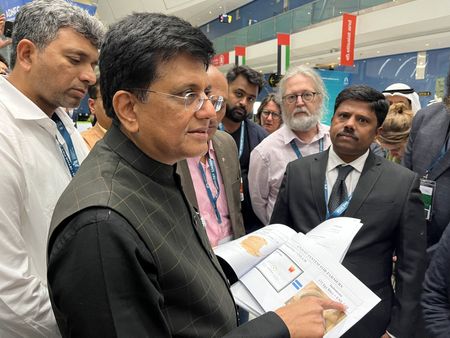By Erwin Seba
HOUSTON (Reuters) – Crude oil futures climbed more than $1.60 a barrel on Tuesday, lifted by a temporary cut in U.S.-China tariffs and a better-than-expected inflation report.
Brent crude futures settled at $66.63 a barrel, up $1.67, or 2.57%. U.S. West Texas Intermediate (WTI) crude finished at $63.67, up $1.72 or 2.78%.
The two benchmarks rose by about 4% or more in the previous session after the U.S. and China agreed on sharp reductions to their import tariffs for at least 90 days, which also boosted stocks on Wall Street and the dollar.
“We didn’t participate as much as other markets did yesterday in the China boom, so we’re catching up today,” said John Kilduff, a partner with Again Capital LLC. “Also the data this morning gives the Fed room to potentially begin making some moves.”
The U.S. Labor Department reported on Tuesday that the Consumer Price Index rose 2.3% in the 12 months through April, the smallest year-over-year gain in four years, leading Wall Street firms like JPMorgan Chase and Barclays to cut their forecasts of a U.S. recession in the coming months.
The tamer inflation reading will likely be greeted with some relief by the Federal Reserve, which has kept its benchmark interest rate unchanged since last cutting it in December. The U.S. central bank has paused its rate cuts amid concerns that the trade war could reignite inflation.
“All the numbers are bullish today,” said Phil Flynn, senior analyst with Price Futures Group. “The inflation number, the economic data are very supportive.”
The Organization of the Petroleum Exporting Countries and its allies, a group called OPEC+, are planning to boost oil exports in May and June, which is seen as possibly limiting oil’s upside.
OPEC has raised oil output by more than previously expected since April, with its May output likely to increase by 411,000 barrels per day.
Meanwhile, sources told Reuters that Saudi Arabia’s crude oil supply to China will hold steady in June after hitting its highest level in more than a year in the previous month after an OPEC+ decision to increase output.
The kingdom is the second-largest crude supplier to China behind Russia.
Elsewhere, signs broadly point to demand for refined fuel remaining strong.
“Despite the deteriorating outlook for crude demand, positive signals from the fuel markets cannot be overlooked,” JPMorgan analysts said in a note.
“Although international crude prices have declined by 22% since their peak on January 15, both refined product prices and refining margins have remained stable.”
Reduced refining capacity – mostly in the U.S. and Europe – is tightening gasoline and diesel balances, increasing reliance on imports and raising susceptibility to price spikes during maintenance and unplanned outages, they added.
(Reporting by Erwin Seba in Houston; Additional reporting by Saheer Dareen, Trixie Yap and Stephanie Kelly; Editing by Deepa Babington, Paul Simao and Matthew Lewis)










